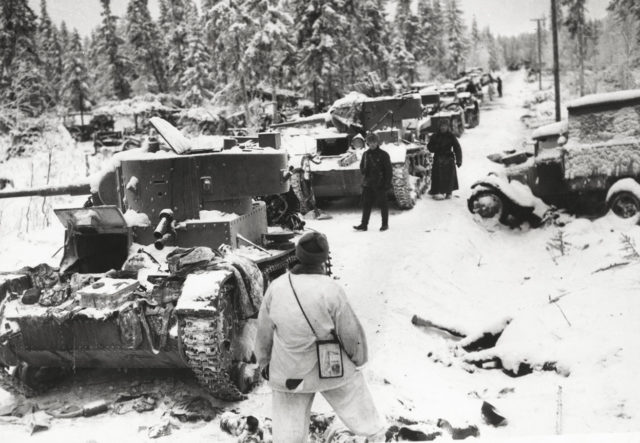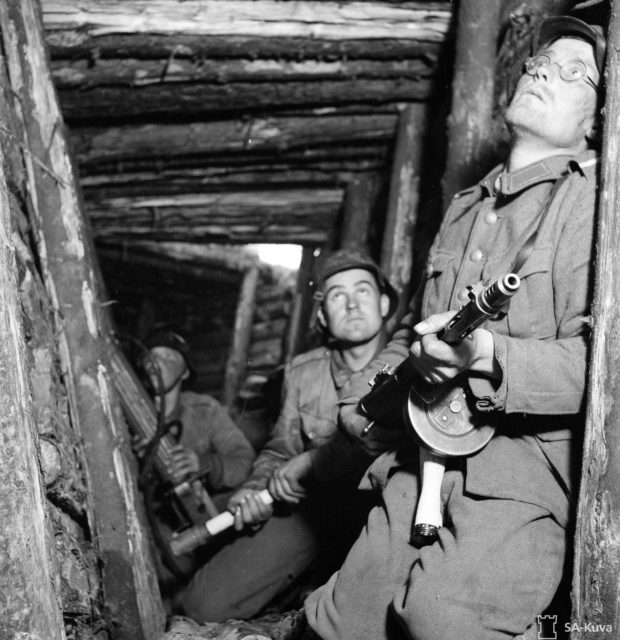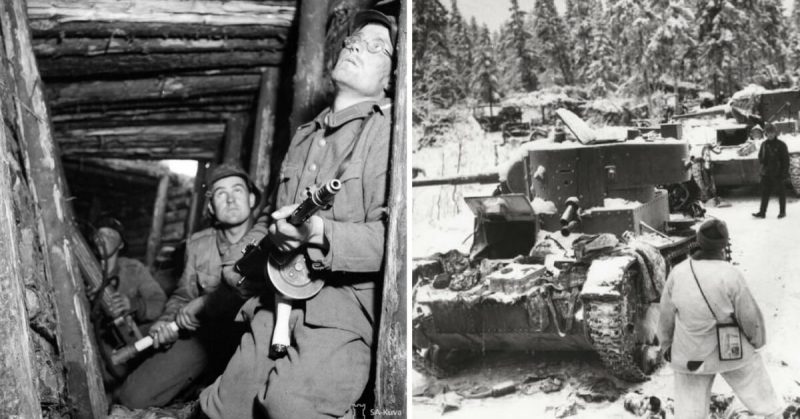Throughout World War II, countless countries fought against one another. While the majority of the battles pitted the Allied Forces against the Axis Powers, other nations entered conflicts with these two predominant forces too. It was truly a conflict that consumed the entire world – yet today, more than half a century after the fighting ceased and peace treaties were signed, we often forget that unaligned countries were yanked into the war.
While you might think that the Scandinavian countries such as quiet Sweden, and unassuming Finland remained well out of the way of any wartime battles, this wasn’t the case. Finland, in particular, joined WWII as a force to be reckoned with, and the northern nation proved it wouldn’t stand for invasions on its territory.
Eventually, Finland joined the fight against Nazi Germany with a declaration of war against its former ally. That’s right: even unassuming Finland fought a war against Germany, even though it never aligned with the Allied Forces.
Finland Formed an Ally Before WWII Began
Before the outbreak and total international involvement that occurred during WWII, a significant struggle was happening in Finland. In the late 1930s, the world watched as Adolf Hitler and his Army stormed into Poland. Rumblings and fears regarding this sudden takeover began spreading, and they were perhaps the loudest in the USSR as Josef Stalin began to worry about the German intentions for Leningrad.
Concerned that Hitler would target Leningrad in the coming weeks and months, Stalin wanted to protect his city – so he decided to fight back by building up his territories and armed forces. The Soviet leader began demanding that Finland, the USSR’s western neighbor, allow his military to control certain portions of its land.
Finland didn’t want to get involved in a potential war – and the nation certainly didn’t want to experience a military occupation similar to Poland’s. So, the country refused Stalin’s demands and pushed back, announcing its intent to keep its land for Finland alone. Stalin and the USSR didn’t like that response.
On November 30, 1939, the Red Army enacted its ability to invade any nation in its “sphere of influence” as detailed in the non-aggression agreement signed by Germany, Russia, and other nations (including Finland). The USSR military stormed into Finland, taking control of those highly desired lands.

Yet the Red Army found itself stunned when Finland responded with a strong defensive attack, sending the Soviets back with trained resistance. Unfortunately, the Finnish resistance lost power quickly, and the country found itself involved in an unexpected war. Fortunately for Finland, Germany was growing increasingly angry with the USSR.
The Nazi-controlled nation formed an alliance with Finland, offering aid in the form of money and military power. German troops entered Finland and fought alongside its soldiers, helping to push the Red Army back. As Finland succeeded, so too did its alliance with Germany strengthen.
A Last-Minute Switch
Everything changed in June 1944. As Finland and its German assistance fought against the Soviet invasion, Finnish President Risto Ryti resigned. Suddenly, the pro-Nazi and pro-German government leading Finland was no more – and an anti-German successor, Gustaf Mannerheim, stepped in to lead the country. He immediately moved to end the Finland-USSR war.
So, less than a year after the Soviet invasion, Finland and the USSR signed the Treaty of Moscow, which allowed the Russians to control their desired Finnish territories and stopped all aggression. However, there was one particular stipulation in the treaty: Finland had to break off its alliance with Germany and remove every last German soldier from its land.
In addition to kicking German aid to the curb, the Treaty of Moscow required that Finland break all diplomatic ties with the Nazi-run nation and publicly announce the end of all German military support. Finland received a hard deadline from the USSR: all German troops had to leave Finnish soil by September 15, 1944. Immediately, the Finnish government and military began making plans to evacuate all German presence – yet the Germans had plans of their own.
Once the news of the armistice between Finland and the USSR broke, the German military decided that they would leave only on their own terms.
Skirmishes and Battles Begin
Unsurprisingly, the tension between Finland and Germany grew after this announcement. Finland was desperate to avoid any further fighting after years of battling the Red Army, exhausted and depleted. However, the German military wasn’t about to leave quietly.
Within hours of discovering Finland’s alliance switch, German intelligence planned to carry out a secret objective: they would give the Finnish government a timeline for their withdrawal, but would then implement a scorched earth policy, destroying as many roads, railroads, and bridges as possible on their way out.

It took just a little more than a week for a skirmish to break out between the Finnish and German armies. On September 28, 1944, a unit of the Finnish military issued a surrender demand to a small German contingent. When no response came back, the Fins opened fire on the Germans, stunning them with a surprise attack.
Just 24 hours later, another battle broke out when a German outfit detonated explosives and destroyed a bridge while the Finnish military was crossing it. A day later on September 30th Finland’s army surrounded the German army and cut them off while attempting to cross a road headed north.
The battles continued to intensify as both Finland and Germany attempted to thwart the other’s objectives. As 1944 rolled into a new year and 1945 began, the two nations were facing off on a regular basis as Finland worked to keep its word with the USSR and Germany tried to maintain its position, territory-wise.
The Official Declaration of the Lapland War
Though it took Finland a bit of time, the Scandinavian nation finally decided to go all in and declare war against its former ally. On March 3, 1945, Finland announced that it was at war with Germany – and both the USSR and the US were thrilled. The move proved smart, as Germany was already struggling against the massive Russian Army now at the gates of Berlin and Western Allies who were now deep inside Germany.
Finland fought Germany for less time than many other nations, and was never officially aligned with the Allied Forces, yet the nation became an important factor contributing to the end of WWII. Thanks to the added pressure of sending troops and supplies to yet another country, Germany was unable to continue fighting on so every front – and the Allies were able to secure a victory over a frightened and exhausted Germany.
So, while Finland’s fights with its former ally may have faded into history, its effect will always be remembered for making a difference in the second world war.
